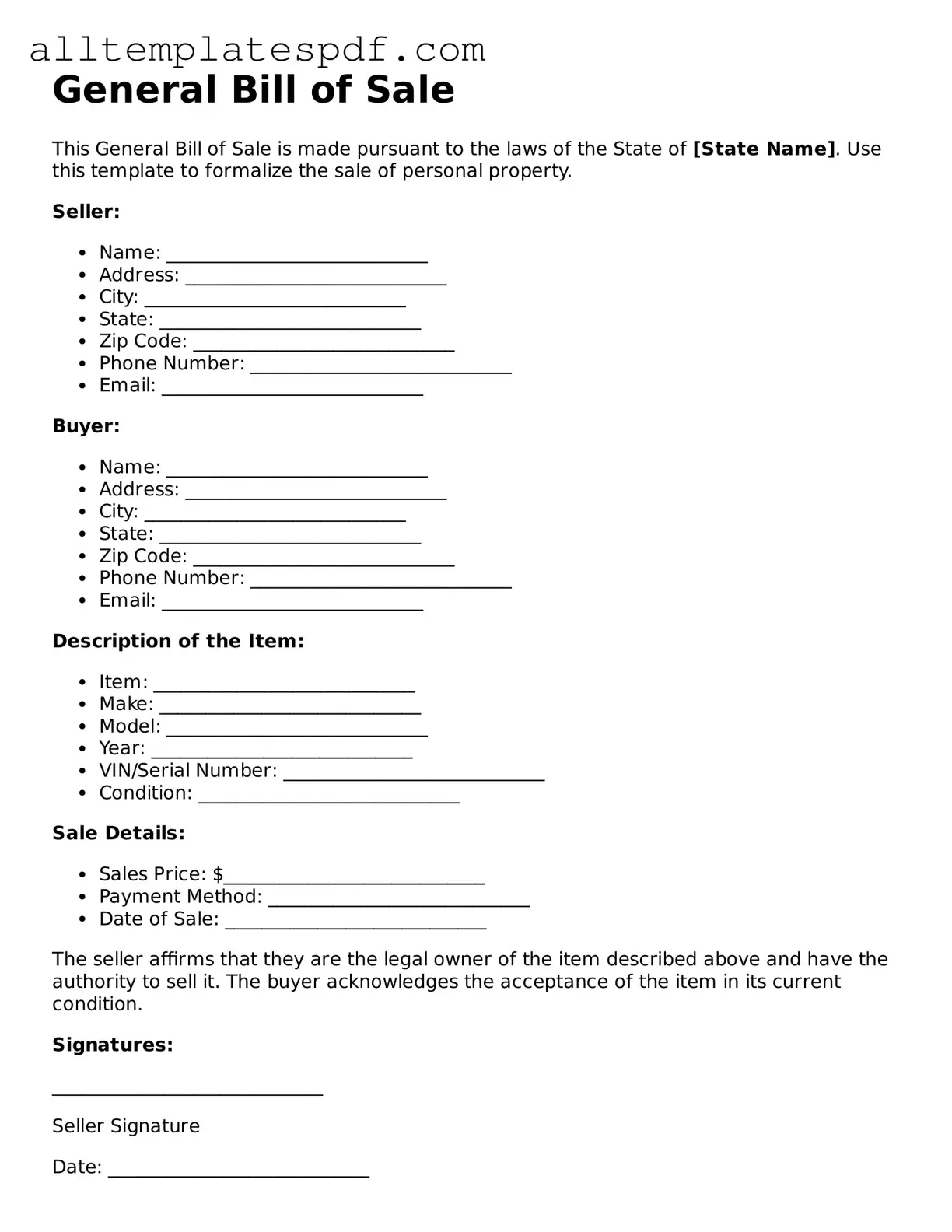When filling out a General Bill of Sale form, many individuals unknowingly make mistakes that can lead to complications down the line. One common error is failing to provide complete information about the buyer and seller. It's essential to include full names, addresses, and contact details. Omitting any of this information can create confusion and may even lead to disputes later on.
Another frequent mistake involves not accurately describing the item being sold. The description should be detailed and specific, including make, model, year, and condition. Vague descriptions can lead to misunderstandings about what was actually sold, which can complicate any future claims or warranties.
People often overlook the importance of including the sale price. Leaving this blank or providing an incorrect amount can create issues for both parties. The sale price is a crucial part of the transaction and serves as a record for tax purposes. Always ensure that the price is clearly stated and agreed upon by both parties.
In many cases, individuals forget to date the Bill of Sale. The date is significant as it marks the official transfer of ownership. Without a date, it can be challenging to establish when the sale occurred, which could lead to legal complications if issues arise later.
Not signing the document is another common oversight. Both the buyer and seller must sign the Bill of Sale to make it legally binding. A signature signifies that both parties agree to the terms outlined in the document. Without signatures, the sale may be considered incomplete.
Some people fail to keep a copy of the completed Bill of Sale. It’s important for both the buyer and seller to retain a copy for their records. This document serves as proof of the transaction and can be vital in case of disputes or if future legal issues arise.
Another mistake is neglecting to check local laws regarding Bill of Sale requirements. Different states may have specific rules about what must be included in the document or whether it needs to be notarized. Ignoring these regulations can result in a document that is not legally valid.
Finally, individuals sometimes rush through the process without reviewing the completed form for errors. Taking the time to double-check all information can prevent mistakes that might cause problems later. A thorough review ensures that all details are accurate and complete, providing peace of mind for both parties involved in the transaction.
